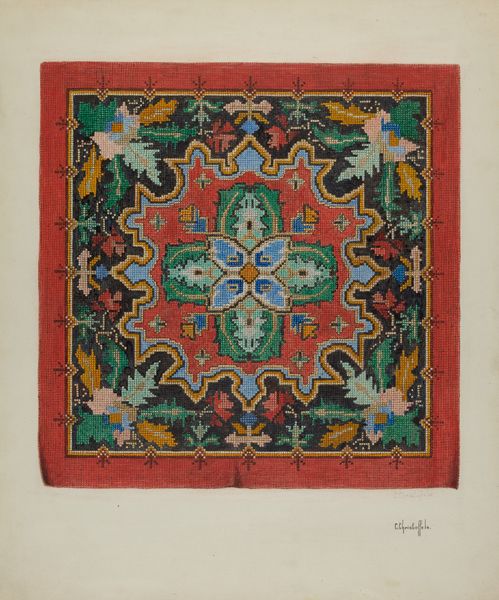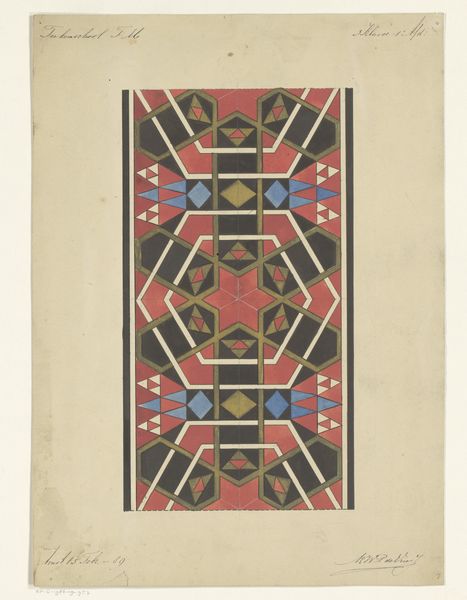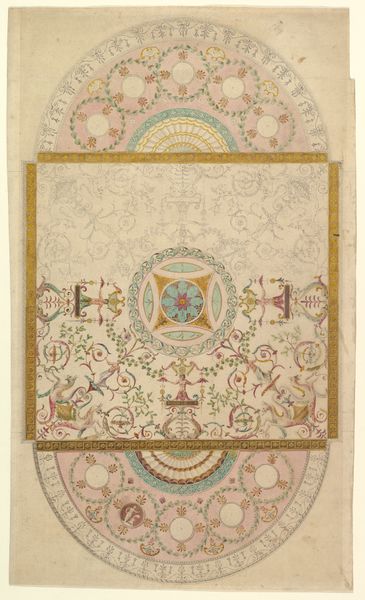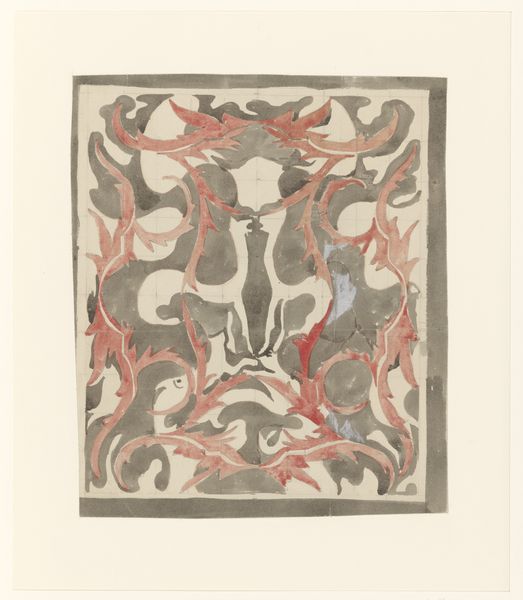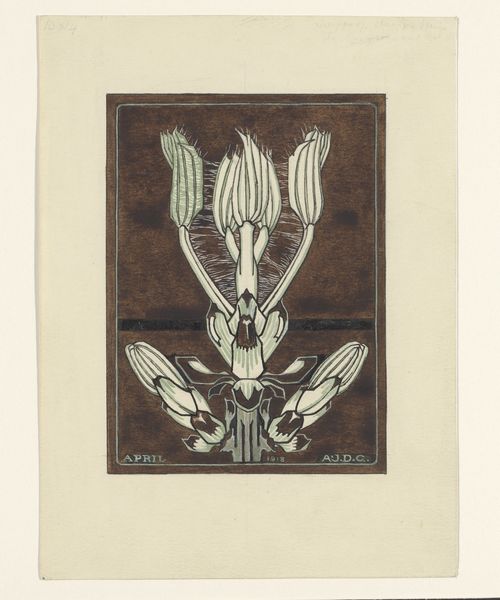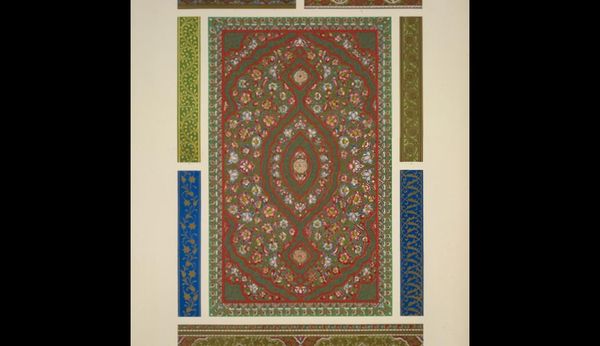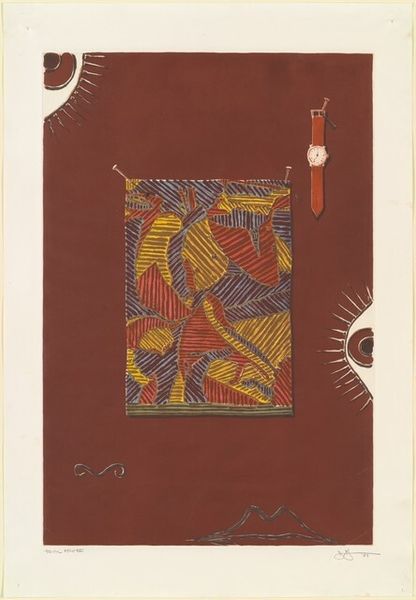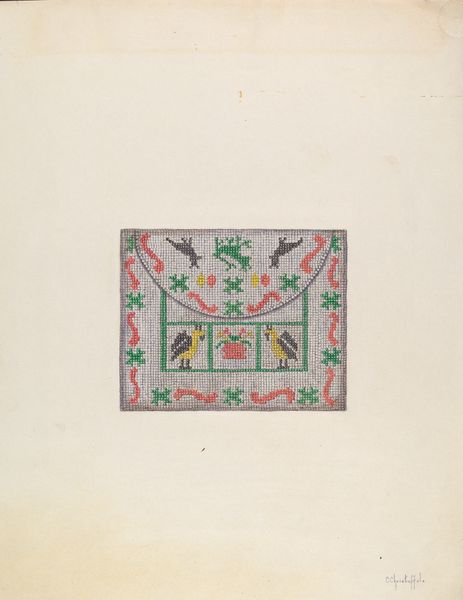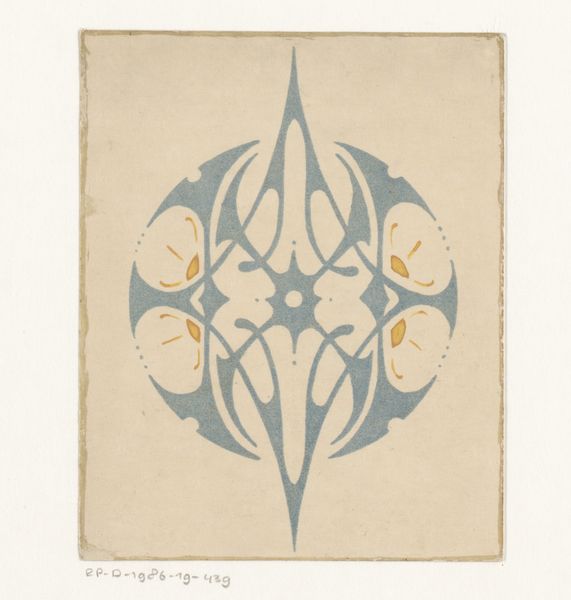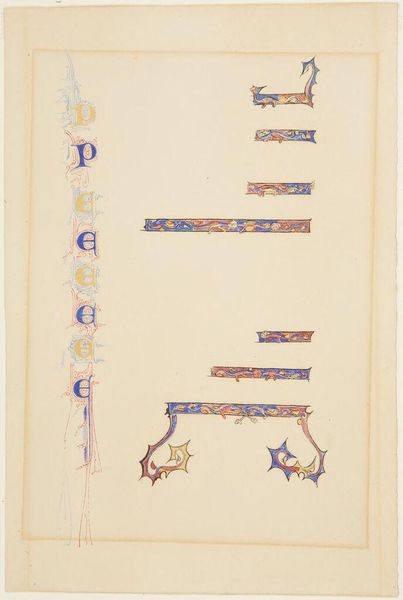
Dimensions: plate: 25.08 × 20.16 cm (9 7/8 × 7 15/16 in.) sheet: 46.04 × 38.42 cm (18 1/8 × 15 1/8 in.)
Copyright: National Gallery of Art: CC0 1.0
Curator: Tony Fitzpatrick’s "Emerald Spade," created in 1996, combines collage and printmaking in a mesmerizing mixed-media work. Editor: Immediately, I'm struck by the detail. It feels almost textile-like, dense and layered, demanding closer inspection of its textures. Curator: Precisely. Fitzpatrick is a master of juxtaposing disparate elements to create rich symbolic narratives. The spade, of course, has historical weight. Here, surrounded by flora and small figures, its associations of fate, and perhaps misfortune, are softened, subverted. What interpretations surface for you? Editor: I’m drawn to the visible processes, how the materials speak. There’s a clear embrace of collage – the rough edges, the layering. The image alludes to folk art and working-class print traditions, less precious, more accessible than mainstream gallery art. The material composition emphasizes its hand-made quality. Curator: Absolutely. Think about how the artist uses symbolism, too. There's the inclusion of those small characters—hints of outsider culture—interacting with emblems from mainstream playing cards and art nouveau design. It’s like Fitzpatrick’s weaving together the marginal and the dominant, revealing the underlying social tapestry. He’s challenging us to read between the layers, see the connections. Editor: That’s valid, but let’s not ignore the inherent tension that creates when materials meet. The layering and detail may represent how those working-class figures are layered by time, tradition, history. This could explain the color and composition—how the material builds something akin to art nouveau yet diverges significantly. Curator: And to further push the thought about layering: Fitzpatrick’s biographical connection to Chicago—its history of labor movements, its vibrant counter-cultures—deeply informs his choices here. We can read Emerald Spade not just as a visually compelling artwork, but as an archive of lived experience. A history presented to us as material and aesthetic composition. Editor: Agreed. The way he handled his materials communicates on so many levels. I love how it uses everyday materials in the context of “fine art” without ever being inaccessible. Curator: It gives one plenty to consider, viewing as it does the layers and tension—materially, artistically, theoretically. Editor: Precisely, yes. I am happy we dove deeper into those production qualities; it provided such interesting results.
Comments
No comments
Be the first to comment and join the conversation on the ultimate creative platform.
